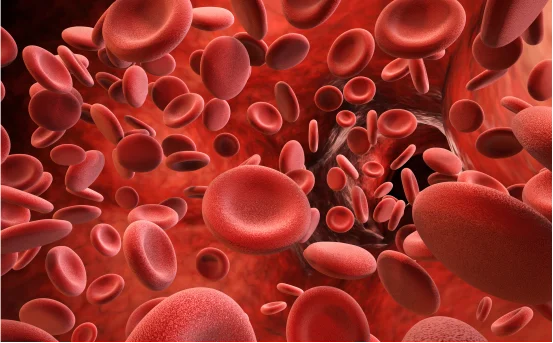Polycystic Ovary Syndrome (PCOS) is among the most frequent hormonal disorders that affect women who are of reproductive age. It causes irregular menstrual cycles, high androgen concentrations (male hormones) and, in most cases, cysts that form on the Ovaries. While the exact cause is undetermined, timely diagnosis is essential to control the symptoms and avoid complications such as infertility, diabetes and heart disease.
Understanding the process by which diagnosis of polycystic ovary syndrome will allow women to control their overall health and reproductive health. Let’s look at the symptoms of PCOS, diagnostic tests, and medical standards that are used to establish the PCOS diagnosis.
Why Is Diagnosis of Polycystic Ovary Syndrome Important?
An early and accurate diagnosis of Polycystic Ovary Syndrome is crucial for many reasons:
- Prevention of Long-Term :- Complications such as Type 2 diabetes cardiovascular diseases, obesity and endometrial cancer.
- Management of Fertility Issues :- Many women suffering from PCOS suffer from ovulation issues. A timely diagnosis can help guide treatment for fertility.
- Improved Quality of Life :- A hormonal imbalance can cause the appearance of acne, hair loss as well as weight gain and mood problems. If diagnosed, it opens the door for effective treatment.
- Beware of misdiagnosis :- PCOS symptoms are often akin to other disorders like adrenal hyperplasia or thyroid disorders so a correct diagnosis is essential.
Symptoms That Prompt a PCOS Diagnosis
Doctors begin the diagnosis process by looking at the symptoms. Some of the most commonly reported symptoms of PCOS are:
- Missed or irregularly scheduled periods
- Hair growth that is excessive (hirsutism) Particularly on the chest, face or back
- Oily or acne-prone skin
- Hair loss or thin hair
- Problems with losing weight or weight gain weight
- Dark spots on the face (acanthosis nigricans)
- The difficulty of conceiving
- Depression or mood changes
Medical History & Physical Examination
Detailed Medical History
The health care provider will ask about:
- Menstrual cycle (regularity frequency, frequency and flow)
- Family with a history of diabetes or PCOS
- Changes in weight
- Hair or skin issues
- Concerns regarding fertility
Physical Exam
During a physical examination the doctor can look for:
- Signs of an excess androgen (acne and hair growth)
- The BMI as well as the weight distribution
- Blood pressure levels
- Skin conditions that are related to insulin resistance
Diagnostic Criteria for PCOS
Doctors typically utilize their knowledge of the Rotterdam Criteria to diagnose PCOS. The diagnosis is confirmed when at least two from three conditions are the case:
- Insane ovulation, or the absence of menstrual flow
- The biochemical and clinical indications of hyperandrogenism (like the appearance of acne, hirsutism or increased testosterone)
- Polycystic ovaries detected by Ultrasound (presence in excess of 12 or more hair follicles within each ovary or the enlarged the ovaries)
Notice: Other disorders that have similar symptoms need to be eliminated prior to confirmation of PCOS.
Tests Used to Diagnose PCOS
Blood Tests
Doctors typically order a series of blood tests to determine:
- Hormone levels: Luteinizing hormone (LH), follicle-stimulating hormone (FSH), testosterone, DHEA-S
- Thyroid function to rule out hypothyroidism
- Prolactin levels
- Blood sugar levels and insulin levels to determine if you have prediabetes or insulin resistance
- The Lipid Profile: determine cholesterol and triglycerides
Pelvic Ultrasound (Transvaginal or Abdominal)
An ultrasound of the pelvis is used to check the ovaries as well as the inner lining of the uterus. In PCOS:
- Ovaries can appear larger
- Small sacs of fluid (follicles) could be visible
- The lining of the endometrial cavity could be thickened as a result of irregular menstrual cycles
Note That not all women suffering from PCOS suffer from cysts, and the presence of ovarian cysts may not suggest you have PCOS.
Differential Diagnosis: Conditions to Rule Out
Before diagnosing PCOS, a doctor can look for conditions that share symptoms, which could include:
- The thyroid disorders (hypothyroidism or hyperthyroidism)
- Hyperprolactinemia
- Congenital adrenal hyperplasia
- Cushing’s syndrome
- Tumors that secrete androgens
This is necessary for a proper diagnosis.
Challenges in PCOS Diagnosis
The diagnosis of PCOS isn’t always easy. Women might not show any symptoms, but symptoms like the appearance of acne or irregular menstrual cycles are frequent in a variety of conditions. Furthermore, PCOS manifests differently in teenagers, women nearing menopausal and those with different ethnic backgrounds.
It is crucial to seek out a doctor or endocrinologist who knows the specifics of hormonal issues.
When to See a Doctor
It is recommended to see your doctor if:
- Miss or have irregular periods that last longer than three months
- Weight gain that is not explained or having difficulty losing weight
- Acne-related issues or hair growth that is unusual
- You are trying to imagine but are having the challenge
- Are you a member of a family with a background or a family history of PCOS as well as Type 2 diabetes
Early consultation can result in earlier interventions and better health outcomes.
Conclusion
Polycystic Ovary Syndrome is a easily treated condition when it is properly diagnosed. If you are experiencing symptoms such as irregular menstrual cycles, excessive eyebrow hairs, and infertility don’t dismiss these symptoms. Consult your doctor and inquire for PCOS tests.
The Polycystic Ovary Syndrome requires an evaluation of symptoms as well as blood tests and imaging. A timely diagnosis could enable efficient treatment strategies, such as modifications to lifestyle, medication and fertility treatment.























